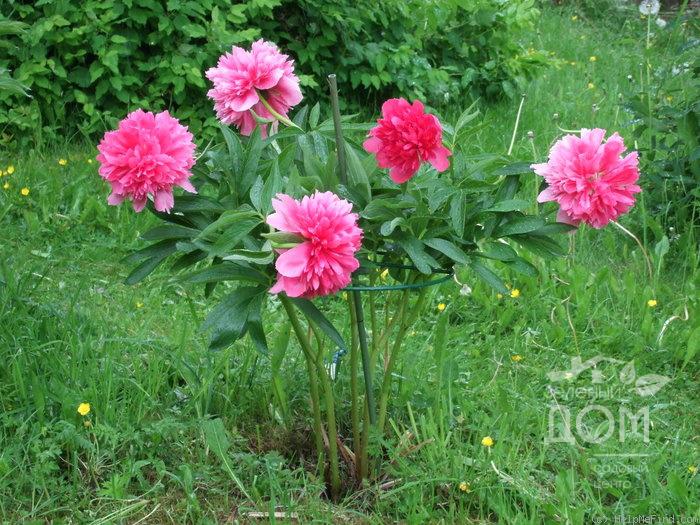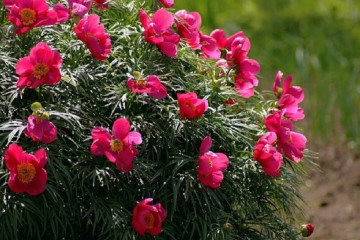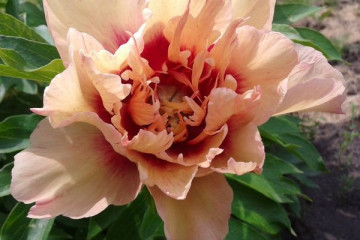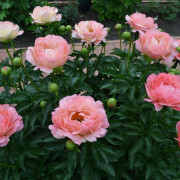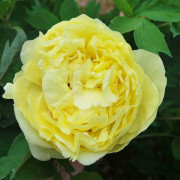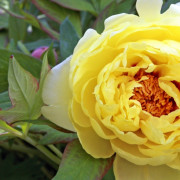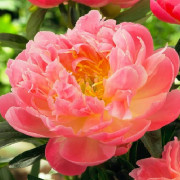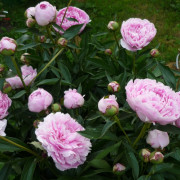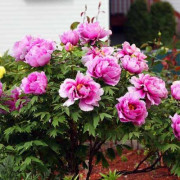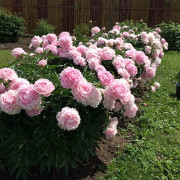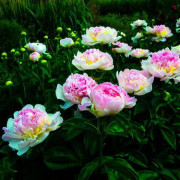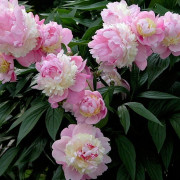Peony Rosea Plena (Paeonia Rosea Plena) in the garden
Content:
Peony Rosea Plena is a beautiful and graceful flower that will decorate any garden. The plant is unpretentious to care for, but it has some features that should be known to all gardeners who decide to breed a crop. Designers love to use a similar plant to decorate summer cottages.
Peony Rosea Plena (Paeonia Rosea Plena) - what is this variety
There are many types of peonies that differ in appearance. Rosea Plena is a very beautiful plant with large pink flowers.
The plant is distinguished by spreading bushes with a lot of greenery. The stems can reach a height of 80 cm. The root system is powerful, goes deep into the ground, so the peony survives winter frosts quite easily. The leaves are large, dissected. The flowers can be up to 15 cm in diameter, the petals are bright pink. During flowering, a wonderful aroma is noted.
The flowering period is short, up to two dozen buds can immediately bloom on the bushes.
Advantages and disadvantages of the variety
This peony variety has both positive and negative qualities. The pluses of the plant include:
- mass flowering,
- beautiful appearance,
- good frost resistance,
- easy care,
- no need for regular transplantation.
The negative aspects of summer residents include a short flowering period, however, even after it, the plant has a rather attractive appearance due to the beauty of the glossy foliage.
Use in landscape design
Peony Rosea Plena is often used in the design of the country landscape. It looks great alone, but is often used in joint plantings.
On its background, various varieties of flowers are planted, which are in perfect harmony with the vibrant greenery of the culture.
Growing a flower, how to plant it in open ground
In order for the plant to please with its excellent appearance and abundant flowering, it is required to plant it correctly and take the necessary care.
The description of the variety says that the root cuttings method is used most often. To do this, roots with buds are separated from the rhizome of an adult bush.
After drying, the sections are treated with activated carbon. The procedure for harvesting planting material is carried out at the end of August.
Planting prepared rhizomes is carried out in autumn - it is better to choose September for this purpose. If desired, such a plant can be planted in April-May, but this year you should not expect flowering.
Location selection, preparation
Peonies love bright and sunny places without drafts. Good drainage is important for them, they prefer fertile soil.
Before planting, it is required to dig a hole 60 * 60 in size, a drainage layer is laid out at the bottom - gravel, crushed stone.Then a mixture of peat, sand, leafy earth is poured into the hole halfway.
For reproduction, it is better to take a plant aged 3-4 years. You need to carefully dig it out, cut off all the stems. The rhizome is cut into several parts, so that each has a pair of buds and adventitious roots.
Planting procedure step by step
Planting a Rosea Plena peony in the ground is quite simple. It is important to follow all the steps in order:
- A rhizome is placed in a hole prepared and spilled with water.
- The upper kidney should be level with the surface.
- A new sprout is covered with soil, slightly pressed down, watered well.
After a while, you can mulch the place around, using sawdust for this purpose.
Planting with seeds (for breeding)
Planting peonies with seeds is used only for breeding. The process is troublesome and takes a lot of time. In addition, the seeds germinate rather hard, and small plants take a long time to develop. Such bushes begin to bloom only at 6-7 years.
Plant care
The peony of the Rosea Plena variety is quite unpretentious in care, however, some features are recommended to be taken into account. Then the plant will delight you with a beautiful appearance and abundant flowering.
- Watering and feeding
Peonies need constant moisture during the period of bud formation. At this time, a couple of buckets of water are poured under each plant. The rest of the time, 1 bucket per week will be sufficient. In rainy weather, no irrigation is needed at all.
Rosea Plena peonies respond well to various feedings. In the spring, it is recommended to fertilize the plant with phosphorus and potassium fertilizers; in the fall, it is better to add the flower of nitrogen agents.
- Mulching and loosening
Loose soil allows the crop root system to receive more air and moisture, so a similar procedure is necessary. Along the way, it is recommended to remove weeds. Mulching allows you to retain moisture in the soil for longer. Mowed grass and leaves are used as mulch.
- Preventive treatment
As a preventive measure, it is recommended to ensure that the plant does not hurt and is not affected by various insects.
Peony bloom ofishinalis Rosea Plena (Officinalis Rosea Plena)
The flowers of the herbaceous peony Rosea Plena have a rich pink hue and a wonderful scent. During the flowering period, the site simply amazes with its beauty and splendor.
The flowering period is in early June. Unfortunately, this variety has a short budding time. After the plant has bloomed, it remains quite decorative and begins to gain strength by the fall and winter.
During flowering, it is recommended to remove wilted flowers, but the stems are left. At this time, the peony can be fed with mineral fertilizers. After flowering is over, organic fertilizers are applied.
What to do if it does not bloom, possible reasons
The absence of flowers on a peony is possible if the culture is affected by diseases, pests. It is possible that the plant does not like the conditions, the soil is not suitable for acidity. Do not expect flowering from bushes under two years old.
Peonies after flowering
After flowering, the plant gradually goes into a dormant state, builds up its green mass and prepares for the winter period. He does not need special care at this time.
It is better to transplant adult plants in the autumn, when the growing season is over. In the spring, bud formation occurs; during transplantation, the flower may die.
Peony pruning is carried out in the fall. The tops are cut almost to the very ground, leaving small shoots. In the spring, such a procedure should not be carried out, because the plant will not have time to gain strength by winter.
Diseases, pests and ways to control them
This variety is quite resistant to diseases and attacks of harmful insects. From diseases, bushes can be affected by gray rot and other fungal diseases. You can deal with them with the help of special fungicidal agents.
Of the pests, aphids, ants, nematodes are dangerous to peonies. When infected with the latter, the bush will have to be completely destroyed. But a lover of peonies may well fight ants and aphids. There are folk methods for eliminating insects. If they do not help, it is perfectly acceptable to use special chemistry.
Peony Rosea Plena is a beautiful plant that will decorate the garden. The culture does not require complex care, easily tolerates frost, and with proper care it will delight you with abundant flowering and large flowers.



